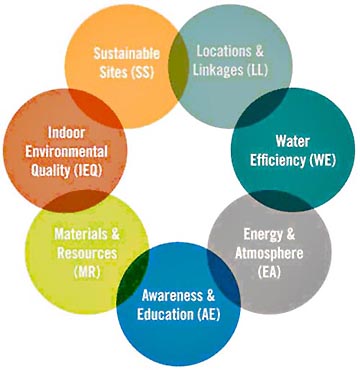Platinum Living
Martha and Bill Sykora’s 1951 house looks like a conventional, home. Nothing sci-fi about it. Behind the façade, it’s anything but conventional. It will be Anne Arundel County’s first LEED Platinum-certified home.
The Sykora home proves that an environmentally progressive building doesn’t have to look like a science project.
Dreaming Green
When Bill and Martha Sykora bought in Annapolis in December 2009, the modest ranch house needed major TLC. Water flowed next to and into the basement. The newest features, including the HVAC system, were vintage 1970s. It was insulated, barely, with 1950s’ fiberglass batting.
On the plus side: Good bones, opportunity and a Broad Creek waterview.
“We’ve always been environmentally conscious,” Bill tells Bay Weekly. “We did what we could to make our other houses more efficient, but we never had the chance to do it all.”
This house was their chance.
“The lifestyle we saw as a military family living in Europe made us acutely aware of how much Americans consume,” Martha says. “We wanted to change that, at least for our family.”
They found inspiration at the biennial Solar Decathlon on the National Mall where collegiate teams design, build and operate solar-powered houses to be cost-effective, energy-efficient and attractive. These houses are — and look like — science projects.
“The houses were unlivable,” Bill says. ”But they all had aspects that were doable in a family home.”
For their liveable green home, the Sykoras teamed up with Kensington-based design-build Alexander Group, Inc.
Work began in summer of 2010.
Building Green
It would have been easier to tear down the old house and start fresh, but the Sykoras said no.
“Creating a high performance, energy-efficient home and re-use of major components of the existing structure was challenging,” says Alexander Group CEO Alex Dean.
In green lingo, you don’t tear down. You deconstruct.
“Deconstruction is the careful disassembly of building components and finding ways to re-use them on-site or for donation,” explains Dean.
Wood floors, some windows, interior doors, some trim moldings and the board-and-batten siding were saved. Leftovers were donated to Second Chance salvage in Baltimore.
A big hurdle was Anne Arundel County’s building permit system, all the more demanding because the house is in a critical area.
After six months of wrangling, permits in hand, it was out with the old and in with the new almost everything: nitrogen-reducing septic system; geothermal heating and cooling system; sprayed-in, closed-cell, foam insulation; roof-top solar panels; and high-efficiency windows.
The new house is so well insulated that, to make sure it got enough healthy fresh air, an air-quality ventilation system was added.
The 1970s’ kitchen was opened up for better traffic flow and light, but the Sykoras kept it modest by today’s size standards. They chose energy-efficient Energy Star appliances, cambria countertops made from recycled material and cabinets made from sustainably harvested wood.
Inside and out, the house got a new coat of low- or zero-VOC paint.
The Sykora dream green house passed the county’s inspection. But another set of inspectors had to verify the house as an environmental ideal.
LEEDing the Way

The Sykoras wanted a house that was environmentally responsible, efficient and healthy. They hadn’t sought environmental certification, but when Alex Dean presented a scope-of-work that would achieve LEED certification standards, the family jumped on board.
Developed by the U.S. Green Building Council in 2000, LEED certification is an independent verification that a structure, even a community, is built to the highest standards of “human and environmental health.”
Achieving LEED certification may not be as frustrating as county building codes, but it is no walk in the park.
“Project design must be submitted to a U.S. Green Building Council LEED provider and reviewed,” explains Dean, and “a Project Checklist done to determine a preliminary level of certification.”
There are four levels of LEED certification: Certified, Silver, Gold and the highest, Platinum.
The Sykoras and the Alexander Group worked from the LEED checklist, marking off boxes.
LEED third party certifiers “literally poked their fingers into the insulation to make sure there was enough there,” Martha says. “They even pulled off the sink faucet aerators and shower heads to verify they were low-flow.”
Water-wise landscaping earns points. The Sykoras used native plants, many they brought from their former home in Crofton. Dutch white clover, a perennial ground cover, replaced traditional turf.
 |
“It’s great for erosion control and doesn’t need mowing,” Martha says.
Only diseased trees were removed.
“There were some things we just couldn’t do,” Martha says. “Like rain barrels. The LEED qualification said we needed 30 rain barrels based on the total roof surface. We don’t have that many downspouts. I’ve got six rain barrels.”
In May, the family moved into a Gold LEED house, one point shy of Platinum.
One Last Box
Nothing about this Gold home says it’s different from the neighbor’s homes.
The front walk crosses a pond, part of the drainage system. Roof run-off not captured by the six rain barrels feeds the pond. Overflow channels into a rain garden.
The geothermal heating and cooling system lies buried under the clover lawn.
Solar panels that power the entire house can’t be seen from street or back yard.
“You can see the panels from the second-floor sewing room,” Bill says. “Or from a pier about half a mile down the creek.”
It doesn’t look different, but it is.
“We have this amazing, beautiful place,” Bill says. And there’s nothing better than to see the electric meter running backwards.”
The whole family has become environmental experts and advocates.
“I learned about nitrogen reducing septic systems, which are very cool,” says 15-year-old Sarah. “I love that our house is green. I brag about it.”
Still, they’ve not yet got full bragging rights.
Public awareness and education earns that one last Platinum point. Your reading this meets that requirement. Check.
